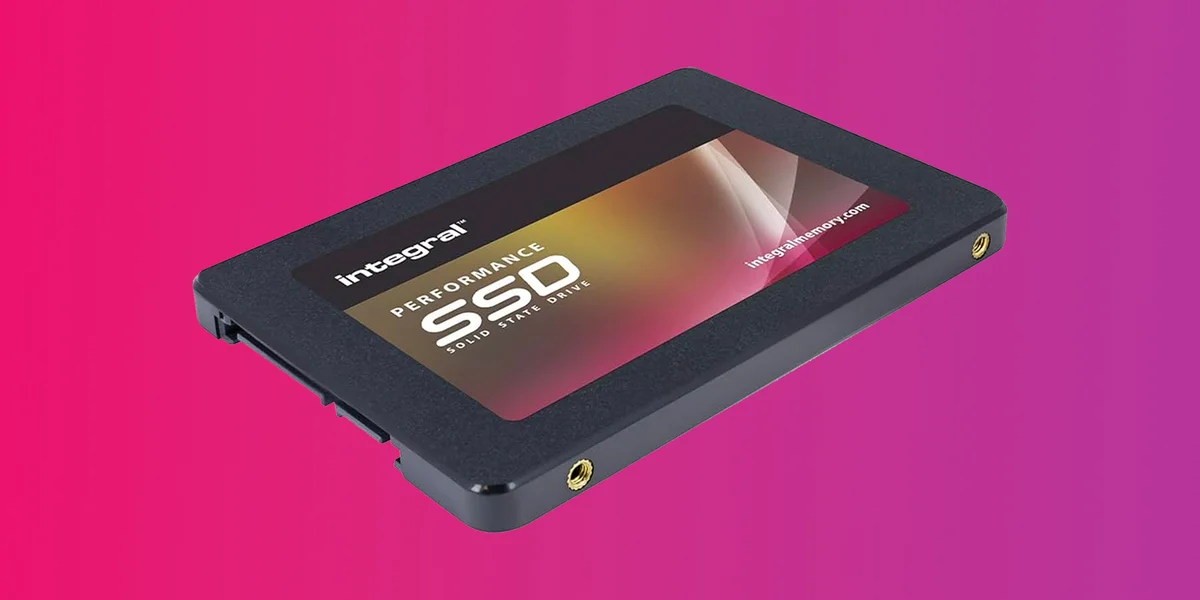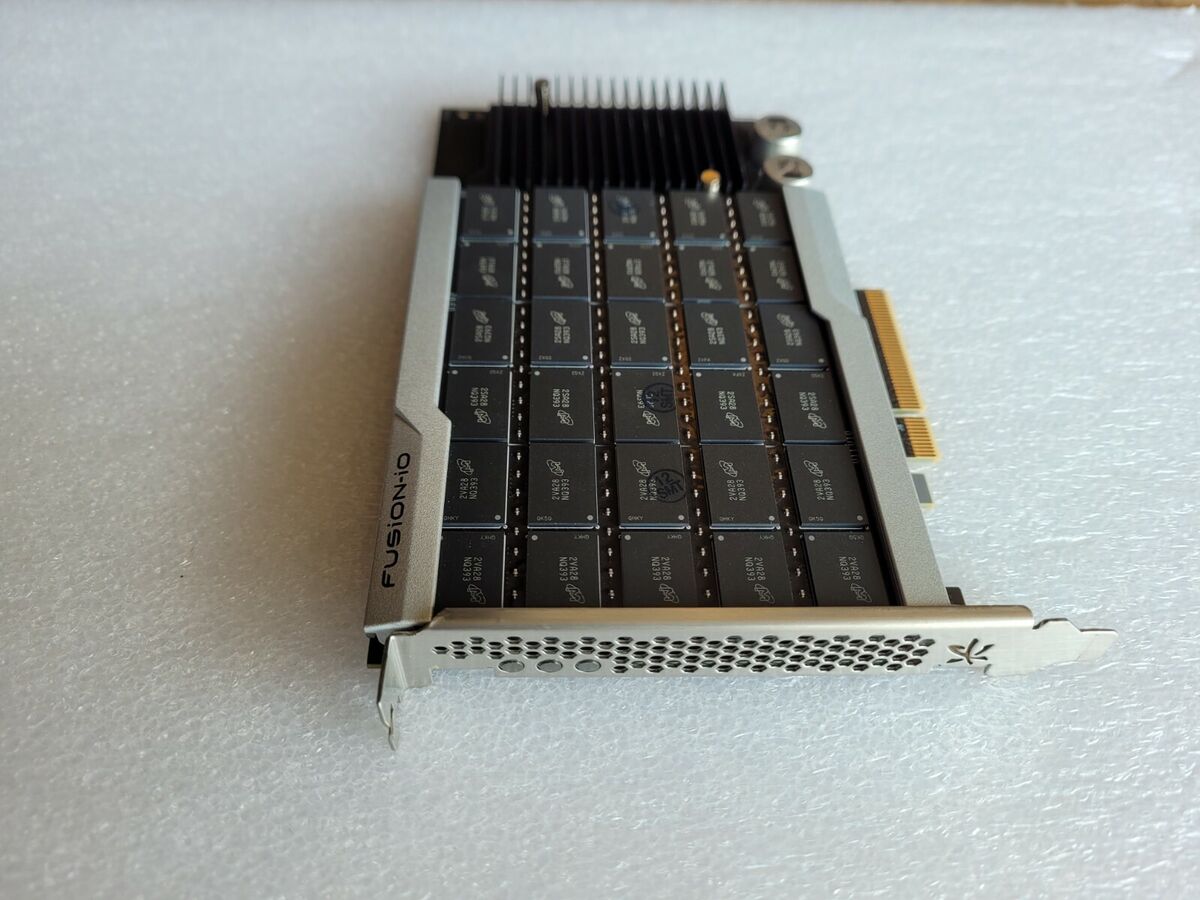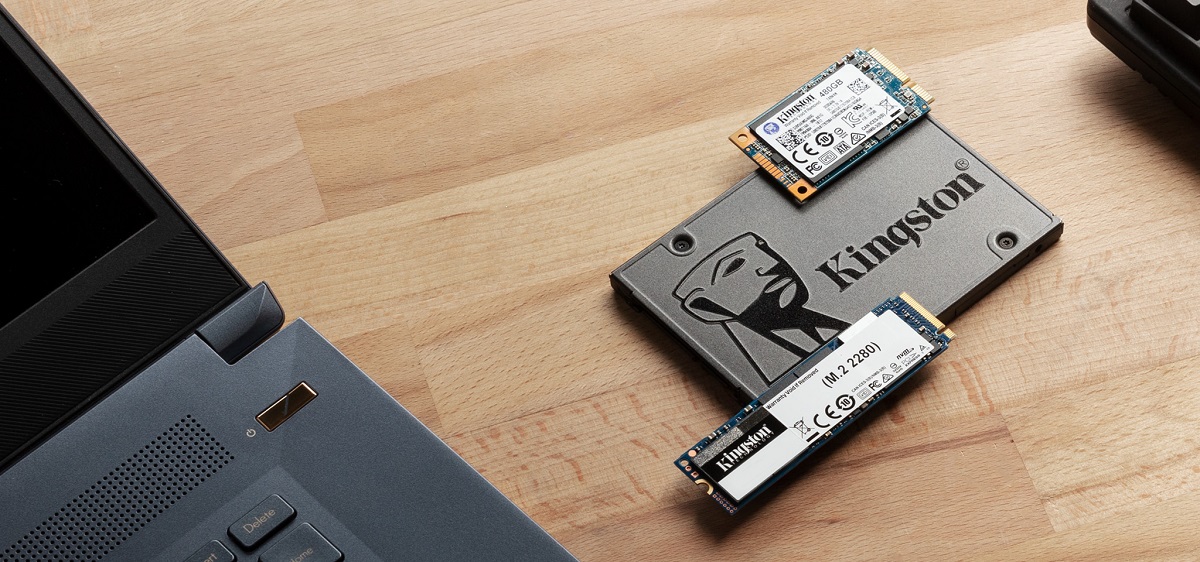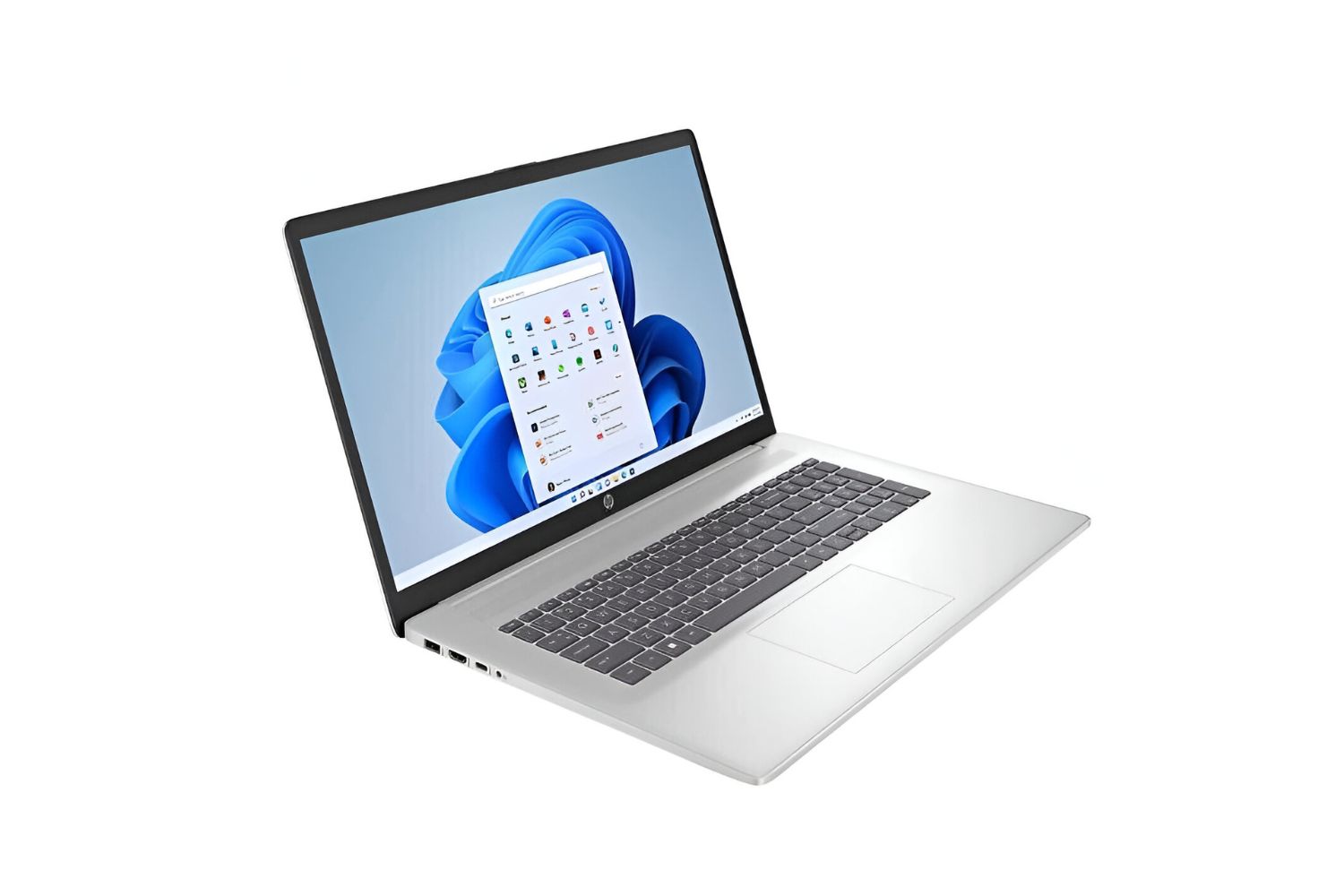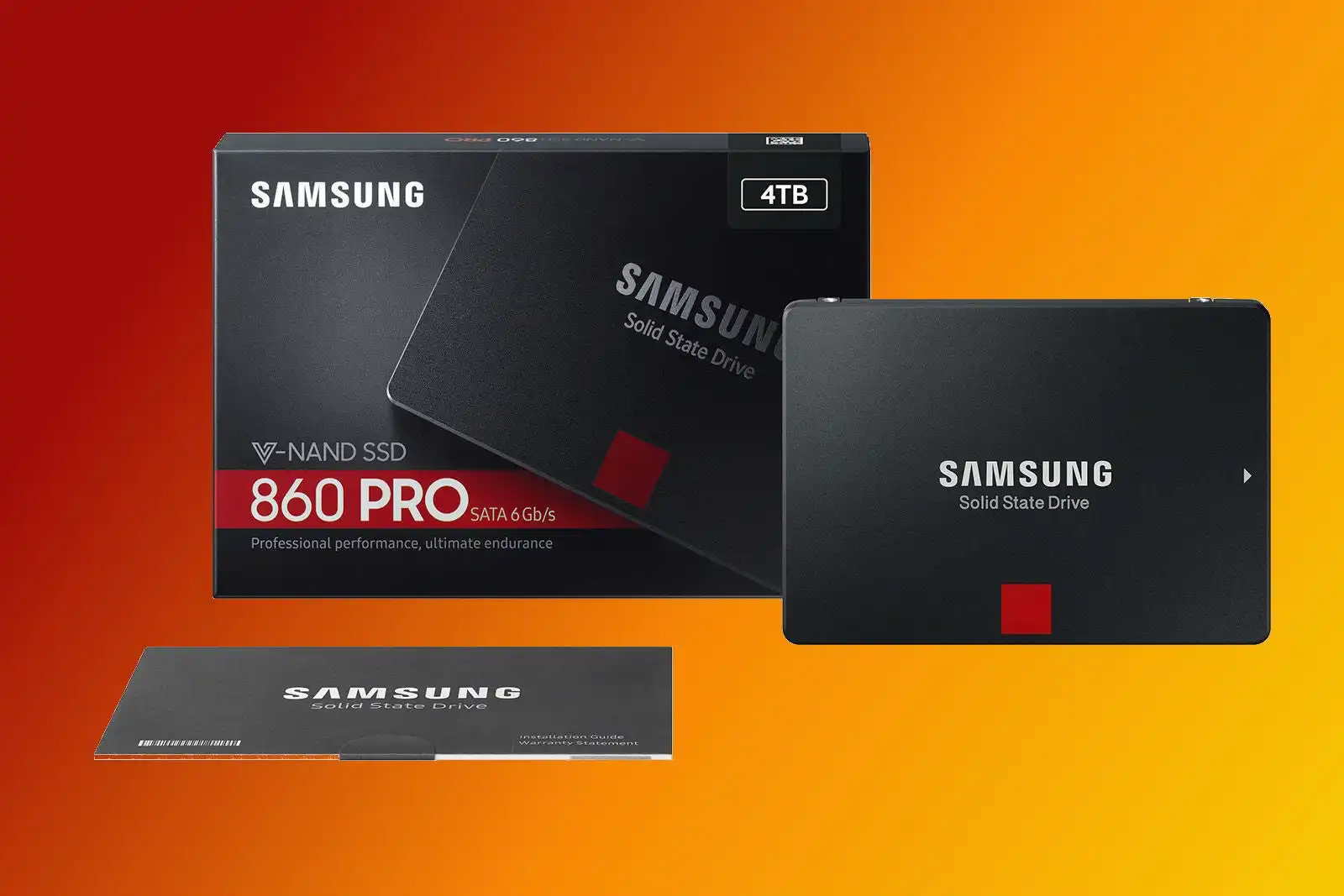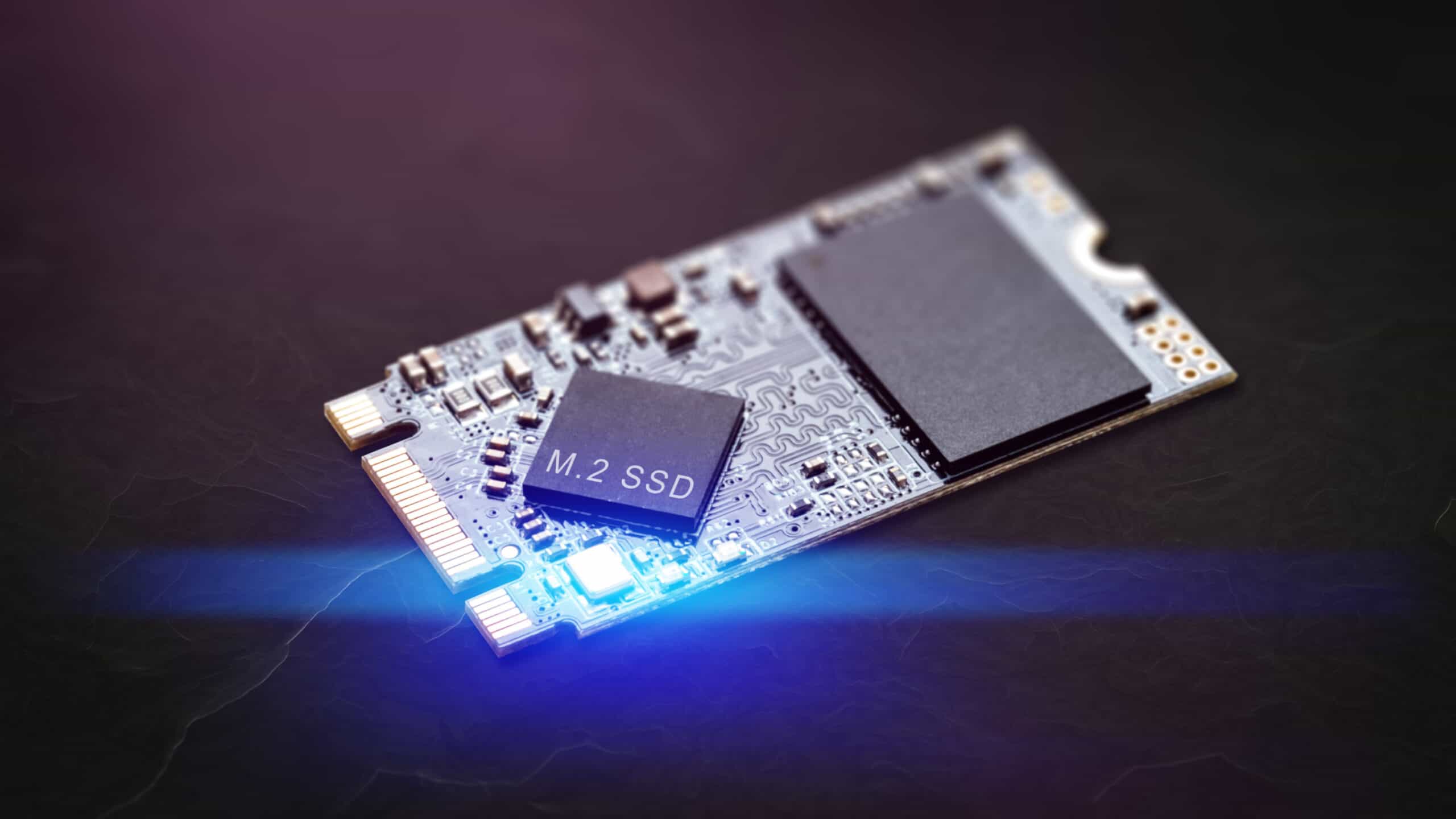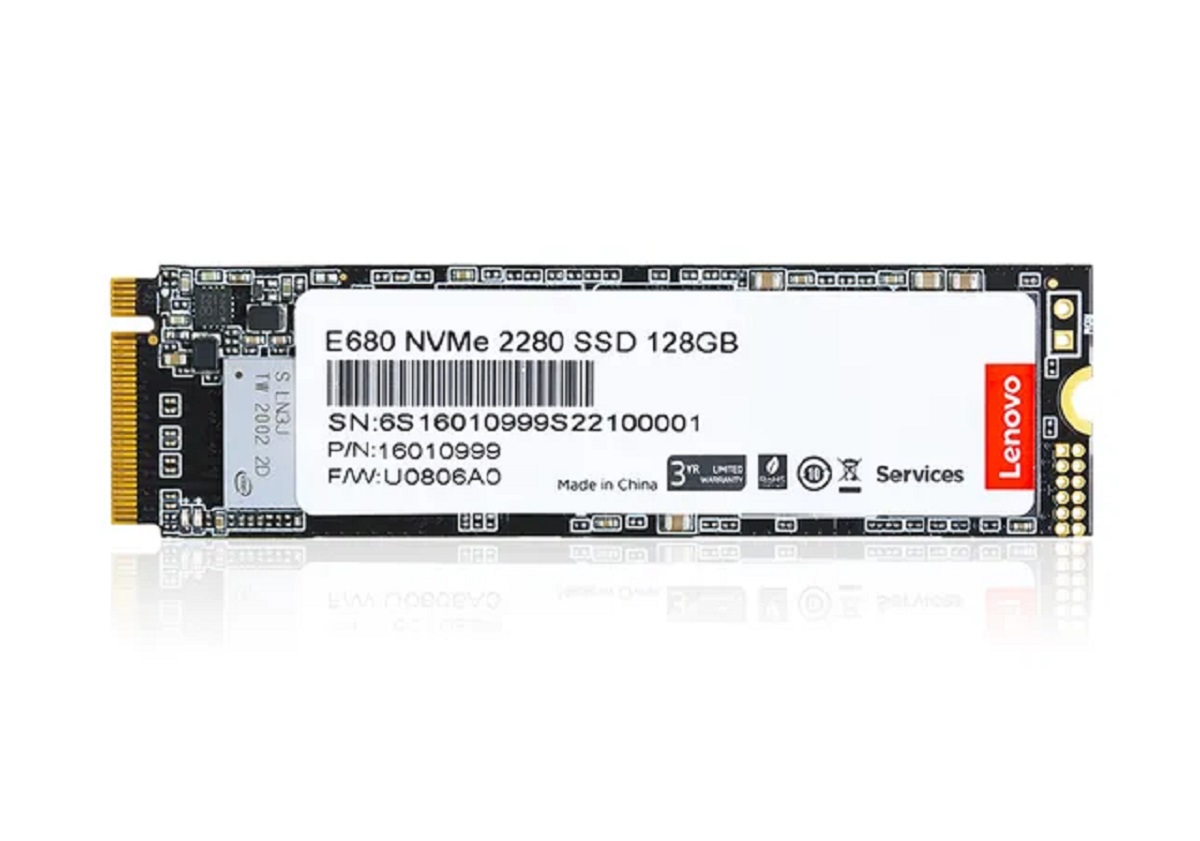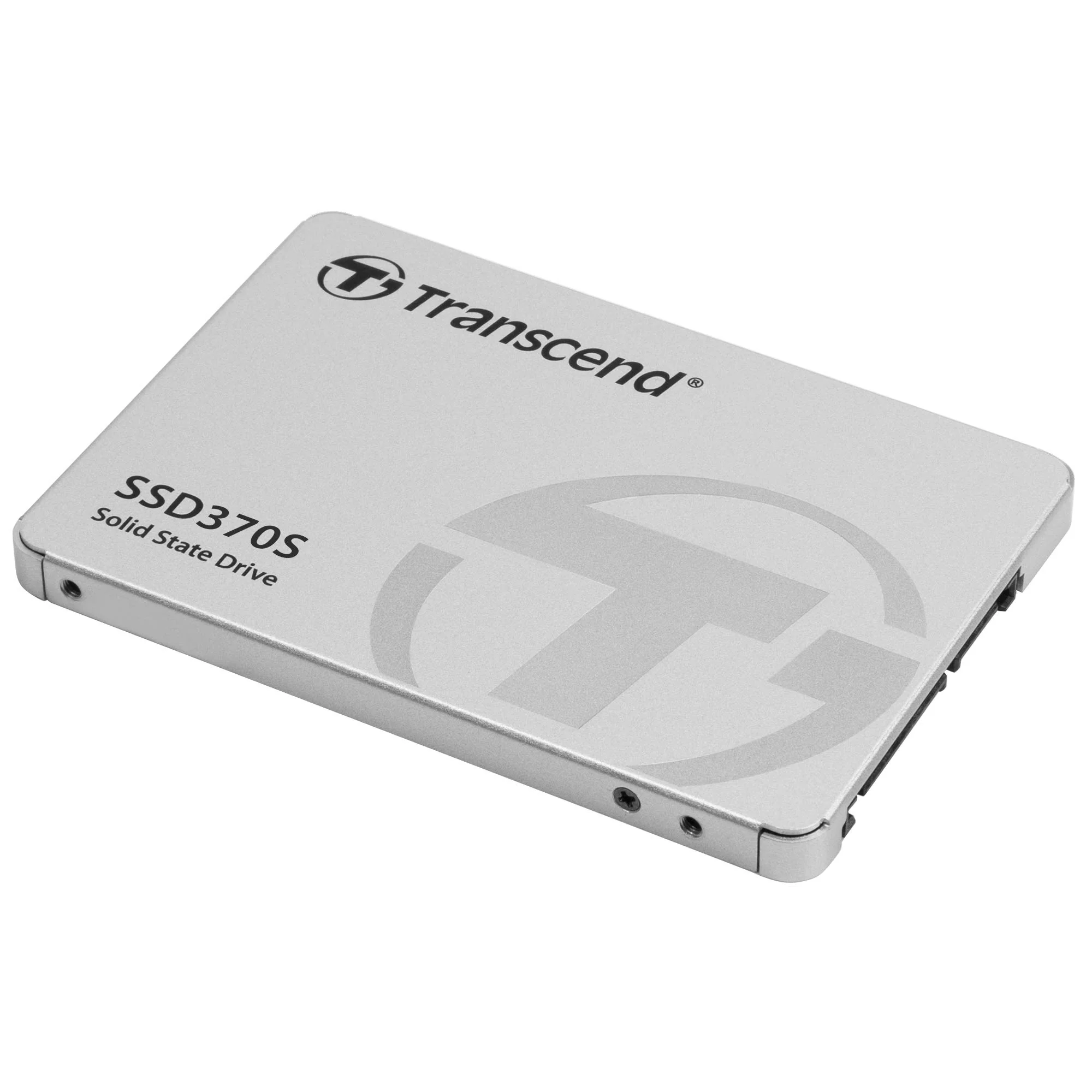Introduction
A solid state drive (SSD) is a type of storage device that has revolutionized the way we store and access data. Unlike traditional hard disk drives (HDDs) which rely on mechanical components, SSDs use flash memory technology to store data, offering faster speeds, enhanced durability, and improved overall performance.
SSDs have become increasingly popular in recent years due to their numerous advantages over HDDs. This article will explore the inner workings of solid state drives, discuss the key components that make them efficient, and highlight the features and technologies that contribute to their functionality.
Understanding the fundamentals of SSDs is important for both individuals and businesses looking to improve their computer systems’ speed and reliability. By learning about the internal components and technologies of SSDs, you can make informed decisions when choosing the right solid state drive for your specific needs.
In this article, we will delve into the world of SSDs, explaining their functionality, advantages, and the various features that set them apart. Whether you’re a tech enthusiast, a gamer, or a professional looking to upgrade your system, this article will provide you with the information you need to understand and appreciate the benefits of solid state drives.
So, let’s dive in and explore the fascinating technology behind solid state drives.
What is a Solid State Drive (SSD)?
A solid state drive (SSD) is a type of storage device that is designed to store, retrieve, and manage digital data. It serves as a permanent storage solution for computers, laptops, and other electronic devices. Unlike traditional hard disk drives (HDDs) that use spinning disks and moving read/write heads, SSDs utilize flash memory to store and access data.
Flash memory is a non-volatile storage technology that can retain data even when there is no power. This means that SSDs can store information even when the computer is turned off or unplugged. They are built with a combination of integrated circuits and semiconductor technology, making them faster, more reliable, and more durable compared to HDDs.
One of the key advantages of SSDs is their speed. Since there are no moving mechanical parts involved, data can be accessed and retrieved at a much faster rate. This results in significantly reduced boot-up times, faster application loading, and improved overall system performance. SSDs also offer faster transfer speeds, allowing for quicker file transfers and improved multitasking capabilities.
Another important feature of SSDs is their durability. Unlike HDDs, which are susceptible to damage from physical shocks and vibrations, SSDs are more resistant to such issues. This is because there are no spinning disks or moving parts that can be affected by external forces. As a result, SSDs are better suited for portable devices and can withstand rough handling and extreme environmental conditions.
Additionally, SSDs consume less power compared to HDDs. The lack of mechanical components means that SSDs require less energy to operate, resulting in longer battery life for laptops and other portable devices. This makes SSDs a preferred choice for users who prioritize energy efficiency and prolonging device battery longevity.
Overall, solid state drives offer a range of advantages over traditional hard disk drives. They provide faster speeds, improved reliability, enhanced durability, and lower power consumption. As technology continues to advance, SSDs are becoming more affordable, making them an increasingly popular choice for individuals and businesses seeking to optimize their data storage and retrieval capabilities.
How does a Solid State Drive work?
A solid state drive (SSD) functions by using a combination of hardware components and advanced algorithms to store and retrieve data. Unlike traditional hard disk drives (HDDs), which rely on spinning disks and moving read/write heads, SSDs utilize flash memory technology to perform their operations.
At the core of the SSD is the NAND flash memory. This type of memory is made up of cells that store electrical charges. These cells represent the binary values of 0s and 1s, which are the building blocks of digital data. When data is written to an SSD, the electrical charges in the NAND flash memory cells are adjusted to represent the desired information.
One of the essential components in an SSD is the controller. The controller acts as the brain of the drive, managing the data storage and retrieval processes. It communicates with the computer system to receive read and write commands and coordinates the reading and writing of data to and from the NAND flash memory cells.
Another key component of an SSD is the DRAM cache. This is a small, high-speed memory that serves as a temporary storage buffer for frequently accessed data. It allows for faster data transfers between the computer system and the SSD, enhancing overall system performance.
When data needs to be written to an SSD, the controller determines the most efficient way to store the information in the NAND flash memory. This is where the wear leveling algorithm comes into play. Wear leveling ensures that data is distributed evenly across all the NAND flash memory cells, extending the lifespan of the SSD by preventing excessive wear on specific cells.
An important feature of SSDs is the Trim command. When files are deleted or modified, the Trim command informs the SSD to clear and reset the NAND flash memory cells that were previously associated with that data. This improves the performance of the SSD by allowing for faster write speeds and reducing the overhead of outdated or deleted data.
Furthermore, SSDs employ error correction algorithms to ensure data integrity. These algorithms handle the detection and correction of errors that may occur during data transmission or storage. This helps to prevent data corruption and maintain the reliability of the stored information.
Overall, the combination of NAND flash memory, the controller, DRAM cache, wear leveling, Trim command, and error correction algorithms allows solid state drives to provide fast and reliable storage solutions. By utilizing cutting-edge technology and intelligent algorithms, SSDs have become the preferred choice for those seeking improved performance and durability in their data storage devices.
Advantages of using a Solid State Drive
Switching to a solid state drive (SSD) offers a wide range of advantages over traditional hard disk drives (HDDs). These advantages make SSDs increasingly popular in both personal and professional settings, revolutionizing the way data is stored and accessed. Here are some key benefits of using an SSD:
1. Faster Speeds: SSDs are significantly faster than HDDs. They have faster read and write speeds, resulting in quicker boot times, faster application loading, and overall snappier system responsiveness. Whether you’re a gamer looking for reduced loading times or a professional seeking faster data access, the speed advantage of an SSD is a game-changer.
2. Improved Performance: With faster data transfer speeds, SSDs offer improved performance for both everyday computing tasks and resource-intensive applications. They can handle multiple tasks simultaneously without experiencing significant slow-downs, allowing for better multitasking capabilities.
3. Enhanced Durability: SSDs don’t have any moving parts, unlike HDDs that have spinning disks and moving read/write heads. This lack of mechanical components makes SSDs more durable and resistant to shocks, drops, and vibrations. They are less likely to fail due to physical damage, making them ideal for portable devices or environments where reliability is crucial.
4. Energy Efficiency: SSDs consume less power compared to HDDs. This translates to longer battery life for laptops and reduced energy consumption for desktop computers. Not only does this save on electricity costs, but it also contributes to a more environmentally friendly computing experience.
5. Silent Operation: Since there are no moving parts in an SSD, they operate silently. This is in contrast to HDDs which emit noise due to the spinning of the disks and the movement of the read/write heads. The absence of noise improves the overall user experience and makes for a quieter computing environment.
6. Compact Form Factor: SSDs are compact in size and lightweight, making them ideal for slim laptops, ultrabooks, and other portable devices. Their small form factor allows for greater flexibility in designing sleek and portable computing devices.
7. Improved Data Security: SSDs offer enhanced data security features, such as built-in encryption and secure erase functionality. This ensures that your data is protected even if the drive falls into the wrong hands.
8. No Fragmentation: Fragmentation, a common issue with HDDs, occurs when files are scattered across different physical locations on the disk. This can lead to reduced performance over time. With SSDs, fragmentation is not a concern, as they access data electronically and can quickly retrieve information regardless of its physical location on the drive.
Overall, the advantages of solid state drives are clear. Faster speeds, improved performance, enhanced durability, energy efficiency, silent operation, compact form factor, improved data security, and freedom from fragmentation make SSDs a superior choice over traditional hard disk drives. As the prices of SSDs continue to drop, they are becoming increasingly accessible for users seeking better storage solutions for their computing needs.
Internal Components of a Solid State Drive
A solid state drive (SSD) is composed of several key internal components that work together to store and retrieve data. Understanding these components is essential for gaining insight into how an SSD operates and what sets it apart from traditional hard disk drives (HDDs). Here are the main internal components of an SSD:
1. NAND Flash Memory: This is the primary storage medium in an SSD. NAND flash memory utilizes a non-volatile memory technology that can retain data even when power is not supplied. It consists of memory cells that store electrical charges, representing the binary values of 0s and 1s. The arrangement and manipulation of these charges determine the stored data.
2. Controller: The controller is the “brain” of the SSD. It manages the data transfer between the computer system and the NAND flash memory. The controller is responsible for executing read and write requests, ensuring the reliability and efficiency of data storage and retrieval operations. It also incorporates various algorithms and optimizations for enhanced performance and longevity.
3. DRAM Cache: The DRAM cache is a high-speed volatile memory used to accelerate data access and improve overall performance. It acts as a buffer, temporarily storing frequently accessed data and providing the controller with quick access to retrieve or write information. This cache helps to mitigate the relatively slower speed of writing information directly to the NAND flash memory, delivering faster and more efficient data transfers.
4. Interface: The interface serves as the communication channel between the SSD and the computer system. There are various interface standards, such as Serial ATA (SATA), mSATA, PCIe, and NVMe. The chosen interface affects the speed and compatibility of the SSD with the computer system. Newer interface technologies, such as NVMe over PCIe, offer significantly higher transfer speeds compared to traditional SATA interfaces.
5. Capacitors: SSDs include capacitors for power loss protection. These small energy storage components provide temporary power to the SSD in case of an unexpected power loss, ensuring that any pending data in the DRAM cache is written to the NAND flash memory. This feature helps to prevent data loss or corruption during sudden power interruptions.
6. Thermal Management: SSDs may incorporate thermal management features to prevent overheating and maintain optimal operating temperatures. These features can include heatsinks, heat spreaders, and various temperature monitoring mechanisms to ensure the longevity and reliability of the SSD.
These internal components work in harmony to provide the benefits associated with solid state drives. The use of NAND flash memory for data storage, an efficient controller to manage operations and algorithms, a high-speed DRAM cache, a reliable interface, power loss protection, and effective thermal management collectively contribute to the superior performance, durability, and reliability of SSDs.
NAND Flash Memory
NAND flash memory is a crucial component of solid state drives (SSDs), serving as the primary storage medium for data. It is a type of non-volatile memory that can retain stored information even when power is not supplied. The utilization of NAND flash memory distinguishes SSDs from traditional hard disk drives (HDDs) that rely on spinning disks and moving read/write heads. Here’s an overview of NAND flash memory and its significance in SSD technology.
Structure and Operation: NAND flash memory is organized as a grid of memory cells, each capable of storing electrical charges that correspond to binary values. These memory cells are connected in series, forming a series of floating gate transistors. The charge stored in the floating gate determines whether the cell represents a 0 or a 1. To program a memory cell, a high voltage is applied to the control gate, allowing electrons to tunnel into the floating gate. Erasing a memory cell involves removing the trapped electrons by applying a high voltage in reverse polarity.
Benefits of NAND Flash Memory: NAND flash memory offers several advantages over other types of non-volatile memory. Firstly, it provides fast access times, allowing for rapid data read and write operations. This speed contributes to the overall improved performance of SSDs, making them highly desirable for applications that require fast data transfer rates.
Another significant advantage of NAND flash memory is its high durability. Unlike traditional hard drives with spinning platters, there are no mechanical parts that can wear out over time. This makes SSDs more resistant to physical shocks, vibrations, and general wear and tear. As a result, SSDs offer increased reliability and longevity, making them ideal for both consumer and enterprise use.
Synchronous and Asynchronous NAND Flash Memory: Two main types of NAND flash memory exist: synchronous and asynchronous. The primary difference lies in their data transfer mechanism. Synchronous NAND operates with a clock signal, allowing for more efficient and reliable data transfers. Asynchronous NAND does not rely on a clock signal and may have slightly slower performance. However, asynchronous NAND is often less expensive, making it a viable option for budget-conscious consumers.
Multi-Level Cell (MLC) and Triple-Level Cell (TLC) Technology: NAND flash memory can be classified based on the number of bits stored per memory cell. Multi-level cell (MLC) technology allows for storing multiple bits per cell, typically two or three bits. This increases the storage capacity of the memory, but it slightly reduces its endurance and performance compared to single-level cell (SLC) technology, which stores only one bit per cell. Triple-level cell (TLC) technology further increases storage capacity by storing three bits per cell but may have a more significant impact on endurance and performance.
Overall, NAND flash memory is a critical component that enables the fast, reliable, and durable performance of solid state drives. With its non-volatile nature, high-speed data access, and enhanced durability, NAND flash memory has revolutionized the storage industry, offering superior performance compared to traditional hard disk drives.
Controller
The controller is a vital component of solid state drives (SSDs) that plays a critical role in managing the storage and retrieval of data. Acting as the “brain” of the SSD, the controller orchestrates various operations, optimizing performance, endurance, and efficiency. Understanding the controller’s function and capabilities provides insight into the overall functionality and advantages of SSD technology.
Data Management: The controller is responsible for executing read and write commands from the computer system to the NAND flash memory of the SSD. It ensures that data is transferred accurately and efficiently, managing tasks such as wear leveling, error correction, and garbage collection. These processes are essential for maintaining the overall health and optimum performance of the SSD.
Wear Leveling: One of the critical tasks performed by the controller is wear leveling – the distribution of write operations evenly across all the memory cells in the NAND flash memory. By preventing excessive wear on specific cells, wear leveling improves the longevity and endurance of the SSD. The controller keeps track of the number of write cycles to each cell and dynamically assigns new data to the least-used cells, balancing the wear and extending the overall lifespan of the drive.
Error Correction: The controller incorporates advanced error correction algorithms, such as BCH (Bose-Chaudhuri-Hocquenghem) or LDPC (Low-Density Parity Check), to detect and correct errors that can occur during data transmission or storage. These algorithms help ensure the integrity and reliability of the stored data, reducing the risk of data corruption or loss.
Garbage Collection: As data is written and deleted on an SSD, free space is left behind. This free space needs to be efficiently managed to maintain optimal performance. The controller employs a process called garbage collection, which identifies and consolidates blocks of data that have been marked as deleted but still occupy physical space. By reclaiming these unused blocks, the controller prepares them for future data writes, minimizing write amplification and improving overall performance during write operations.
Performance Optimization: SSD controllers utilize various techniques to enhance performance. They can employ predictive algorithms to anticipate and prefetch data that is likely to be accessed, reducing read latencies. They may also incorporate data compression and deduplication algorithms to optimize storage efficiency and increase usable capacity. The controller’s ability to execute these optimization techniques contributes to the speed and responsiveness of SSDs.
Host Interface: The controller connects to the computer system through a host interface, such as SATA, mSATA, PCIe, or NVMe. The interface determines the data transfer speed and compatibility with the system. Newer interfaces, like NVMe over PCIe, provide significantly faster data transfer rates, taking full advantage of the SSD’s capabilities.
In summary, the controller is a critical component in SSDs, overseeing data management, wear leveling, error correction, garbage collection, and performance optimization. By efficiently managing these tasks, the controller contributes to the impressive performance, endurance, and reliability of solid state drives.
DRAM Cache
The DRAM cache is an important component of solid state drives (SSDs) that serves as a temporary storage buffer for frequently accessed data. It plays a crucial role in enhancing the overall performance and efficiency of the SSD by providing quick access to commonly used information. Understanding the function and benefits of the DRAM cache sheds light on the advantages of SSD technology.
Accelerating Data Access: The primary function of the DRAM cache is to speed up data access. It acts as a high-speed volatile memory that stores frequently requested data, such as operating system files, commonly used applications, or frequently accessed documents. Storing this data in the DRAM cache allows the SSD to quickly retrieve information without having to access the slower NAND flash memory.
Improved System Responsiveness: By utilizing the DRAM cache, SSDs offer improved system responsiveness. When data is requested, the controller first checks the DRAM cache to see if the data is available. If the data is found in the cache, it can be retrieved almost instantly, significantly reducing access times. This quick retrieval leads to snappier application launches, faster boot times, and overall smoother computing experiences.
Efficient Caching Algorithms: The caching algorithms embedded in the SSD controller determine which data is stored in the DRAM cache. These algorithms typically prioritize frequently accessed data or predictive data that is likely to be accessed in the near future. By effectively predicting and storing data in the cache, these algorithms optimize the data access pattern, further improving overall performance.
Write Acceleration: In addition to accelerating read operations, the DRAM cache can also improve write speeds. When data needs to be written to the SSD, the data is first written to the DRAM cache. This allows the SSD to quickly acknowledge the write operation and provide a faster response to the host system. The data is then sequentially written from the DRAM cache to the NAND flash memory, optimizing the use of flash memory resources and improving the write performance of the SSD.
Data Integrity: The DRAM cache plays a role in ensuring data integrity. When data is written to the DRAM cache, it is temporarily stored until it can be written to the NAND flash memory. In the event of a sudden power loss or system failure, some SSDs employ power loss protection mechanisms to ensure that the data in the DRAM cache is not lost or corrupted, preventing potential data loss and maintaining the reliability of stored information.
The DRAM cache is a key component that contributes to the responsiveness, speed, and efficiency of SSDs. By temporarily storing frequently accessed data, the DRAM cache significantly reduces read latency, enhances write performance, and overall optimizes the data access patterns. With the utilization of the DRAM cache, SSDs deliver remarkable performance improvements compared to traditional hard disk drives.
Interface
The interface of a solid state drive (SSD) is a crucial component that determines the connection between the SSD and the computer system. It plays a significant role in data transfer speeds, compatibility, and overall performance. Understanding the different types of interfaces used in SSDs provides insight into the capabilities and advantages of SSD technology.
SATA: Serial ATA (SATA) is one of the most common interface standards used in SSDs. SATA interfaces come in different generations, such as SATA II, SATA III, and the latest SATA revision, SATA 3.3. SATA interfaces offer broad compatibility with various computers and devices, providing relatively fast and stable data transfer speeds. However, the maximum data transfer rates of SATA interfaces may limit the full potential of SSDs, especially with higher-end models that can achieve faster speeds.
mSATA: mSATA (Mini-SATA) is a smaller form factor SSD interface primarily used in ultrabooks, tablets, and other compact devices. It offers similar performance to SATA interfaces but in a smaller physical size, making it suitable for devices with limited space for storage components. While not as widely adopted as SATA, mSATA interfaces provide a cost-effective storage solution for portable devices.
PCIe: Peripheral Component Interconnect Express (PCIe) is a high-speed serial interface used to connect SSDs directly to the computer’s motherboard. PCIe interfaces offer significantly faster transfer rates compared to SATA interfaces. The latest PCIe 4.0 and PCIe 5.0 versions provide even higher data bandwidth, enabling blazing-fast data transfer speeds and reduced latency. PCIe SSDs are often preferred by enthusiasts and professionals who demand ultra-fast storage solutions for demanding applications like video editing, gaming, or data analysis.
NVMe: Non-Volatile Memory Express (NVMe) is a host controller interface designed specifically for SSDs that utilize PCIe as the physical interface. NVMe takes advantage of the faster transfer rates and reduced latency provided by PCIe, unlocking the full potential of high-performance SSDs. By eliminating the legacy overhead and bottlenecks associated with older storage interfaces, NVMe offers extremely fast data transfer speeds and significantly improves IO (input/output) operations. NVMe SSDs are the preferred choice for those seeking the highest levels of performance and responsiveness.
Choosing the right interface for your SSD depends on your specific needs and system requirements. SATA interfaces provide compatibility and stable performance, making them suitable for most general-purpose applications. mSATA interfaces are ideal for compact devices where size is a concern. PCIe and NVMe interfaces deliver exceptional performance and are particularly well-suited for power users, gamers, content creators, and professionals who demand the utmost speed and responsiveness from their storage devices.
It’s important to ensure compatibility between the SSD and the computer system when selecting an interface. The computer’s motherboard or expansion slots must support the chosen interface to ensure proper functionality. With the advancement of technology, newer interface standards are emerging, providing faster speeds and improved performance. Consider the requirements of your specific use case and the capabilities of your system to make an informed decision regarding the interface for your SSD.
Features and Technologies in Solid State Drives
Solid state drives (SSDs) are not just about fast and reliable storage. They incorporate various features and technologies that enhance their performance, reliability, and security. Understanding these features and technologies gives valuable insights into the capabilities and advantages of SSDs. Here are some key features and technologies found in solid state drives:
Trim Command: The Trim command is an essential feature in SSDs that helps maintain optimal performance. When files are deleted or modified, the Trim command notifies the SSD to free up space by marking the previously occupied memory as available for new data to be written. This prevents performance degradation caused by outdated or deleted data and allows the SSD to maintain consistent high-speed performance over time.
Wear Leveling: Wear leveling is a technique used in SSDs to prolong their lifespan. As data is written and erased on an SSD, certain flash memory cells can wear out faster than others. Wear leveling algorithms distribute write operations across different memory cells, ensuring that each cell is utilized evenly. This helps prevent some cells from being excessively worn, maximizing the lifespan and durability of the drive.
Error Correction: Error correction is a crucial technology in SSDs that ensures the integrity of stored data. The NAND flash memory used in SSDs is susceptible to various types of errors. Error correction algorithms, such as BCH (Bose-Chaudhuri-Hocquenghem) or LDPC (Low-Density Parity Check), are employed to detect and correct errors in real-time, preventing data corruption and maintaining the reliability of stored information.
Power Loss Protection: Power loss protection features are designed to protect data during sudden power outages or system failures. SSDs utilize mechanisms such as capacitors or energy storage devices to provide sufficient power to complete ongoing data transfers and ensure that data in transit or held in temporary buffers, like the DRAM cache, is written to the NAND flash memory. Power loss protection safeguards against potential data loss or corruption, providing additional data security and reliability.
Encryption: Many SSDs offer built-in encryption capabilities to protect sensitive data. This encryption can be either hardware-based or software-based. Hardware encryption employs a dedicated encryption processor to encrypt and decrypt data transparently, requiring minimal impact on performance. Software-based encryption allows users to encrypt specific files, folders, or the entire drive, providing flexibility but potentially impacting performance based on the encryption implementation.
Security Features: SSDs often include advanced security features to protect data integrity and prevent unauthorized access. These features can include self-encrypting drives (SEDs), secure erase capabilities, and TCG Opal or IEEE 1667 compliance. Self-encrypting drives automatically encrypt data as it is written and decrypt it when accessed, ensuring that data remains secure when the drive is powered off. Secure erase capabilities allow for the complete removal of data from the drive, making it virtually unrecoverable.
Advanced Flash Memory Technologies: SSDs benefit from advancements in NAND flash memory technology. Technologies such as SLC (Single-Level Cell), MLC (Multi-Level Cell), and TLC (Triple-Level Cell) offer varying levels of capacity, endurance, and cost-effectiveness. Newer technologies like QLC (Quad-Level Cell) are pushing the boundaries of SSD capacity while maintaining reasonable performance and affordability.
These features and technologies contribute to the enhanced performance, reliability, and security of solid state drives. Understanding their benefits allows users to make informed decisions when choosing an SSD that best fits their specific needs, delivering optimal storage solutions for both personal and professional computing environments.
Trim Command
The Trim command is a vital feature in solid state drives (SSDs) that helps maintain optimal performance and longevity. It plays a crucial role in preventing performance degradation that can occur over time due to outdated or deleted data. Understanding the Trim command provides valuable insights into how SSDs efficiently manage data and ensure consistent high-speed performance.
When files are deleted or modified on an SSD, the operating system sends a Trim command to the SSD’s controller. The Trim command notifies the SSD to release the previously occupied memory cells, marking them as available for new data. This process is necessary because SSDs handle data differently from traditional hard drives: they cannot directly overwrite existing data. Instead, SSDs must erase and rewrite entire blocks of data, making it inefficient to perform this operation for every deleted or modified file.
The Trim command significantly improves SSD performance by reducing the need for time-consuming erase operations. By marking the memory cells as available, the SSD can bypass unnecessary write operations and quickly allocate fresh cells when new data needs to be written. This avoids the performance degradation that can occur when writing data to previously used cells that still contain outdated or deleted information.
By implementing the Trim command, SSDs can maintain more efficient and consistent performance throughout their lifespan. Without Trim, SSDs would experience decreased write speeds and increased wear on the flash memory cells due to unnecessary write operations. Trim helps maximize the endurance of the drive by minimizing write amplification, prolonging its overall lifespan.
Operating systems, such as Windows, macOS, and Linux, support Trim commands and automatically send them during regular maintenance tasks, such as the deletion of files. However, it is essential to ensure that Trim is enabled on the SSD and supported by the operating system to take full advantage of this feature.
While Trim is widely supported, some older operating systems or RAID configurations might not fully recognize or utilize this feature. In such cases, it is recommended to verify compatibility and enable Trim manually to optimize the SSD’s performance. Most SSD manufacturers provide tools or utilities that allow users to check and enable Trim functionality if necessary.
Overall, the Trim command is a crucial feature for SSDs. By efficiently managing data storage, it ensures consistent performance and extends the lifespan of the drive. Understanding the Trim command and its implementation allows users to make the most of their SSDs and maintain their optimal performance throughout their usage.
Wear Leveling
Wear leveling is a fundamental technique used in solid state drives (SSDs) to distribute write operations evenly across the NAND flash memory cells, ensuring prolonged endurance and increased lifespan. By mitigating the wear on specific memory cells, wear leveling plays a crucial role in maintaining optimal performance and reliability in SSDs.
SSDs utilize NAND flash memory, which has a limited number of write-erase cycles per cell. Each time data is written or erased, a small portion of the flash memory wears out. Wear leveling algorithms address this limitation by dynamically spreading the write operations across all memory cells, preventing some cells from being overused while others remain underutilized.
The wear leveling process begins by tracking the number of write operations executed on each memory cell. The SSD’s controller keeps a record of the erase cycles, ensuring that data is written to the cells with the lowest wear level. This technique ensures that write operations are evenly distributed throughout the SSD, maximizing the endurance of the NAND flash memory.
Wear leveling algorithms operate at the block level, rather than the cell level. Blocks in NAND flash memory typically consist of multiple memory cells, so wear leveling moves data between blocks, rather than individual cells, to ensure wear is distributed evenly across the drive. This technique not only minimizes cell wear but also helps to maintain consistent performance across the entire SSD.
The wear leveling process occurs transparently in the background, dynamically managing the storage of data. As data is written or modified, the wear leveling algorithm determines the appropriate blocks for data placement, considering wear levels, available free space, and other factors. It ensures that no specific blocks or cells are constantly utilized, thus extending the lifespan and reliability of the SSD.
Wear leveling has a significant impact on the performance and lifespan of SSDs. By evenly distributing the workload, wear leveling reduces the likelihood of individual cells or blocks wearing out prematurely. This improves the overall endurance of the SSD, allowing for more write-erase cycles and increasing its lifespan.
Furthermore, wear leveling helps prevent performance degradation that can occur when certain cells or blocks become excessively worn out. By evenly distributing the write operations, wear leveling minimizes the impact of write amplification—repeatedly erasing and rewriting data in order to update it—ensuring more efficient use of the NAND flash memory and maintaining consistent performance over time.
Overall, wear leveling is an essential feature in SSDs that ensures the balanced distribution of write operations and extends the lifespan of the drive. By mitigating the effects of wear and optimizing the performance of the NAND flash memory, wear leveling plays a critical role in maintaining the longevity, reliability, and consistent performance of solid state drives.
Error Correction
Error correction is a crucial technology employed in solid state drives (SSDs) to detect and correct errors that can occur during data transmission or storage. By ensuring data integrity, error correction algorithms play a critical role in maintaining the reliability and accuracy of stored information in SSDs.
NAND flash memory used in SSDs is susceptible to various types of errors, such as program/erase errors, read disturb errors, and even random bit flips due to environmental factors or electrical noise. These errors can corrupt data and compromise the overall reliability of the drive. Error correction techniques counteract these errors, enabling the accurate retrieval and storage of data.
Two common error correction algorithms used in SSDs are Bose-Chaudhuri-Hocquenghem (BCH) and Low-Density Parity Check (LDPC). These algorithms employ sophisticated mathematical techniques to detect and correct errors within the NAND flash memory.
BCH: The BCH algorithm is widely used in SSDs due to its efficiency and capability to handle a range of error types. BCH codes add redundancy to the stored data, allowing for the detection and correction of errors through calculations based on polynomial equations. The level of redundancy can be adjusted to balance performance, storage efficiency, and error correction capabilities.
LDPC: LDPC is a more advanced error correction algorithm that provides enhanced error correction capabilities. LDPC codes use a sparse matrix that allows for efficient processing. LDPC codes offer excellent error detection and correction capabilities with lower overhead. Although they require more computing resources compared to BCH, advancements in hardware designs and the increasing power of SSD controllers have made LDPC an increasingly popular choice for error correction in SSDs.
During the reading process, the SSD controller checks the retrieved data against the error correction codes. If errors are detected, the controller uses the error correction algorithms to correct them. This ensures that corrupted data is corrected before it is delivered to the host system.
Error correction mechanisms are critical in SSDs as they contribute to multiple benefits:
Data Reliability: Error correction algorithms improve the overall reliability of the SSD by detecting and correcting errors. By maintaining data integrity, they ensure that the stored information remains accurate and consistent.
Long-Term Data Retention: By detecting and correcting errors, error correction algorithms prevent data corruption over time. This is particularly important for SSDs, as data stored in flash memory can degrade without proper error correction mechanisms in place.
Enhanced Endurance: Errors in NAND flash memory cells can accelerate wear and reduce the lifespan of an SSD. Error correction helps mitigate the impact of errors, reducing the risk of data loss and extending the overall endurance of the drive.
Overall, error correction is a critical technology in SSDs to ensure data integrity and reliability. The implementation of error correction algorithms, such as BCH and LDPC, enables SSDs to detect and correct errors, providing users with the confidence that their data remains accurate and secure throughout the lifespan of the drive.
Security Features
Security is a paramount concern for many individuals and organizations when it comes to data storage. Solid state drives (SSDs) incorporate various security features to protect data integrity, prevent unauthorized access, and ensure the confidentiality of sensitive information. Understanding these security features provides insight into the measures taken to safeguard data in SSDs.
Self-Encrypting Drives (SEDs): Self-encrypting drives are SSDs that automatically encrypt data as it is written and decrypt it when accessed. This encryption occurs transparently at the hardware level, requiring minimal impact on performance. SEDs utilize strong encryption algorithms, such as the Advanced Encryption Standard (AES), to securely protect data from unauthorized access. In the event that the drive is stolen, the encrypted data remains unreadable, ensuring its confidentiality.
Secure Erase: The secure erase feature is designed to erase data on an SSD in a manner that makes it virtually unrecoverable. This feature is particularly important when disposing of or repurposing an SSD. Secure erase employs advanced techniques to overwrite the entire drive with random patterns of data, making it extremely difficult, if not impossible, to recover any previously stored information. Secure erase ensures that sensitive data is completely removed, reducing the risk of data exposure.
TCG Opal and IEEE 1667 Compliance: TCG Opal and IEEE 1667 are industry standards that define a set of specifications for secure storage devices. SSDs that comply with these standards offer a higher level of security. They provide features such as hardware-based encryption, pre-boot authentication, and secure boot, all of which contribute to enhanced data protection and prevent unauthorized access to the drive.
Hardware and Software Encryption: Some SSDs offer both hardware-based and software-based encryption options. Hardware encryption utilizes a dedicated encryption processor within the SSD and offers high-performance encryption with minimal impact on system resources. Software encryption, on the other hand, allows users to selectively encrypt specific files, folders, or the entire drive using encryption software. Both options provide secure methods to protect confidential data based on individual requirements.
Write Protection: Write protection is a feature that prevents data from being modified or overwritten on the SSD. It is particularly useful when creating read-only partitions or protecting critical data from accidental modification or malware attacks. Write protection helps maintain data integrity and prevents unauthorized changes to valuable information.
Enhanced Authentication: SSDs can implement advanced authentication mechanisms to restrict access to the drive. These mechanisms can include password protection, PIN authentication, or biometric authentication. By requiring specific authentication credentials, SSDs add an additional layer of security to prevent unauthorized individuals from accessing the drive’s contents.
By incorporating these security features, SSDs offer robust protection for sensitive data. Whether it’s encrypting data, securely erasing information, complying with industry standards, or implementing access control measures, SSDs prioritize data security to meet the growing demands for privacy and confidentiality.
Choosing the Right Solid State Drive (SSD)
When it comes to selecting a solid state drive (SSD), several factors should be considered to ensure the best fit for your specific needs. SSDs offer various capacities, performance levels, and price points, providing flexibility for a wide range of users. Here are some key considerations to keep in mind when choosing the right SSD:
Capacity: Determine your storage requirements based on the volume of data you plan to store on the SSD. SSDs are available in a range of capacities, from smaller sizes suitable for operating systems and applications to larger sizes for multimedia files, games, and extensive data storage.
Performance: Consider the performance needs of your system. If you require fast boot times, quick application loading, and rapid data transfer, focus on SSDs with higher data transfer rates and lower latency. NVMe SSDs utilizing PCIe interfaces offer the fastest speeds, followed by SATA SSDs and mSATA drives.
Endurance: Consider the expected workload on the SSD. If you anticipate heavy usage involving numerous write operations, prioritize SSDs with higher endurance ratings. SSD endurance is measured in Total Bytes Written (TBW) and can vary depending on the drive’s technology, such as TLC, MLC, or SLC NAND flash memory.
Reliability: Look for SSDs with proven reliability and low failure rates. Reading customer reviews and researching the reputation of the manufacturer can provide insights into the reliability of a specific SSD model. It’s also beneficial to choose an SSD from a reputable brand known for their quality and customer support.
Compatibility: Ensure that the SSD you choose is compatible with your computer or device. Consider the interface requirements (SATA, PCIe, NVMe, etc.) and physical form factor (2.5-inch, M.2, mSATA) to ensure a proper fit. Consult your device’s specifications or the manufacturer’s documentation for compatibility information.
Budget: SSDs come in a range of price points. Prioritize your needs and evaluate your budget. Consider the balance between capacity, performance, and cost that satisfies your requirements without overspending. Keep in mind that SSD prices have become more affordable over time, offering great value for the performance and reliability they provide.
Additional Features: Assess any additional features that may be important to you. This could include hardware or software encryption, power loss protection mechanisms, or advanced management software that offers monitoring and optimization capabilities. These features can enhance the security, reliability, and overall functionality of the SSD.
By considering these key factors, you can choose an SSD that meets your specific requirements and provides optimum performance, reliability, and value for your investment. Remember to carefully evaluate your needs, prioritize essential features, and select a reputable brand to ensure a satisfying and long-lasting SSD experience.
Conclusion
Solid state drives (SSDs) have revolutionized the storage industry with their speed, reliability, and overall performance. As we’ve explored in this article, SSDs offer numerous advantages over traditional hard disk drives (HDDs), including faster speeds, improved durability, lower power consumption, and enhanced data security. With their advanced features and technologies such as the Trim command, wear leveling, error correction, and security features like self-encryption and secure erase, SSDs provide users with a superior storage experience.
When choosing the right SSD, it’s important to consider factors such as capacity, performance, endurance, compatibility, budget, and additional features to ensure it aligns with your specific requirements. Whether you’re a casual user looking to improve system boot times or a professional seeking high-performance storage for resource-intensive tasks, there’s an SSD available to suit your needs.
As technology continues to advance, SSDs are becoming more affordable, making them increasingly accessible to a wider range of users. Their impact is felt across various industries, from gaming and content creation to enterprise-level storage solutions.
Overall, SSDs have proven to be an essential component in modern computing systems. They provide faster access to data, improved reliability, and enhanced security, making them a preferred choice for individuals and organizations alike. As the demand for faster and more efficient storage solutions continues to grow, SSDs remain at the forefront of innovation, delivering unparalleled performance and stability.
Keep in mind that as technology evolves, new advancements in SSDs will continue to emerge. Staying informed about the latest developments and trends in SSD technology will ensure that you can make educated choices when upgrading or investing in storage solutions.
With their impressive features, advanced technologies, and remarkable performance, solid state drives have undoubtedly transformed the storage landscape and will continue to be at the forefront of data storage solutions for years to come.







